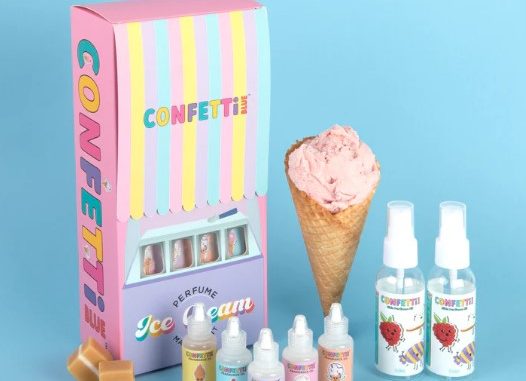
Playing with a perfume making kit is an excellent and exciting way for kids to express themselves as the kit acts as a creative outlet. Crafting a signature scent from scratch can not only be a fun and delightful experience for the kids but is also an extremely educational experience that broadens the sensory horizons for the kids. Having said that, it’s important to remember that these kits often come with chemicals or potent essential oils along with tools that might be hazardous. Therefore, safety should be prioritised while making kids’ perfumes.
Here are nine essential safety tips to ensure a worry-free perfume-making adventure for your little ones:
Supervision is Key
It is important that your kid is under an adult’s supervision throughout the entire process of perfume making. Even though these kits are made for kids and safety protocols are strictly followed, safety risks still exist, for example, your kid might end up swallowing something. The presence of a grown-up in such scenarios ensures that these potential hazards are addressed quickly. Plus, it’s also a great way for the adult and the child to bond and make lasting memories.
Read the Label Together
You kid might be too excited to dive into the activity of perfume making straightaway. But do not rush! Take time to go over the label and understand the content of the label. There might be an important advisory written on the label or mention of some ingredient that your kid can potentially be allergic to. Reading the label can help prevent mishaps. Don’t forget to explain the label to your kid too so they can avoid mistakes and have a safe play that yields fun results instead of scary ones.
Know Your Ingredients
The ingredient list might seem like a trivial thing but mark our words, it is not. Especially when it comes to kid’s products. Take time to discuss the ingredients with your child before you begin your activity since there might be some ingredients that may trigger allergic reactions. Make sure you are aware of the kid’s existing allergies and if you find any ingredient that may not be safe for the kid, discard the product immediately. If unsure, it is always better to perform a small skin test before starting the activity.
Start Small
Kids’ perfumes are fairly easy to make since the kits come with everything that a kid might need to mix the perfume. However, mixing everything at once in large quantities right away can result in overwhelming scents that may not be pleasant. Moreover, the chances of accidental spilling are also greater while handling large quantities. So it is always advisable to start with small quantities. On the brighter side, starting small also means that you’ll have more product left to play with later.
Patch Test First
Even after being cautious with the ingredients, there might be something in the kit that can cause an allergic reaction. So before you let your kids apply the perfume on their skin, do a patch test on a small area like the inner arm to check if it is completely safe. This simple precaution can help prevent any adverse reactions. If you find any rashes or signs of discomfort, rinse the area immediately and discard the perfume.
Keep It Away from Eyes
The content of the perfume-making kit might be entirely safe for your kids but it’s still not a good idea to get them in their eyes. Eyes are one of the most sensitive organs and one small mistake can cost a lot. Instruct your child to apply the fragrance to pulse points, such as the wrists and neck, avoiding the delicate eye area. Accidental contact with the eyes can cause irritation and discomfort, so exercise caution when handling the perfume.
Clean Up is Crucial
Perfume making is fun but it can get quite messy. Keeping things neat and tidy is important for safety. Encourage your child to clean up after each session. Dispose of any waste materials, like empty bottles. Many fragrance oils and essential oils can leave residue behind, which may cause skin irritation upon contact. So, make sure to wash your kid’s hands with soap after the activity and clean the work area for any spillage with disinfectant. Keeping a clean workspace reduces the risk of slips, trips, or accidents caused by clutter.
Store Safely
You might supervise your child while playing with the perfume-making kit but it’s not possible to keep an eye on your kids 24/7. Who can control the curious hands of a child? This is why it’s crucial to store the kit safely in a place that is out of children’s reach once the kit is no longer in use. This will prevent your child from accessing the kit in your absence which in turn will prevent accidents and mishaps. After all, it’s always better to be safe than sorry!
Fun, Not Food
While the scents of the perfumes may be tantalising, it’s crucial to remind your child that these creations are strictly for external use. Unlike edible treats, perfumes are formulated with ingredients that are not safe for ingestion. Ingesting even a small amount of perfume can lead to stomach upset, nausea, or more severe health issues. So it’s essential to encourage them to appreciate their creations through smell, not taste.
These safety measures may sound daunting but don’t let them scare you away from fun! Perfume making kits are a wonderful opportunity for the kids to learn about different scents, explore sensory horizons, and have fun while at them. By following these nine simple safety tips you’ll be able to create a happy bonding experience without any adverse impact. So, gather your supplies, unleash your imagination, and embark on a fragrant journey together with your child. Happy perfume-making!


